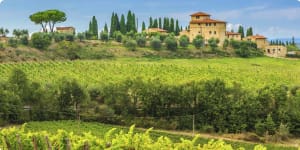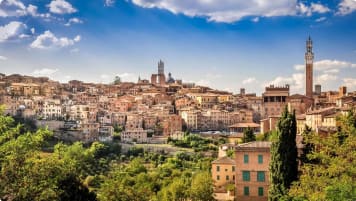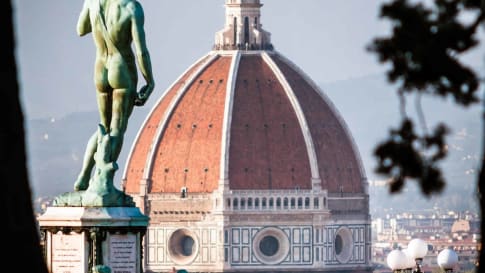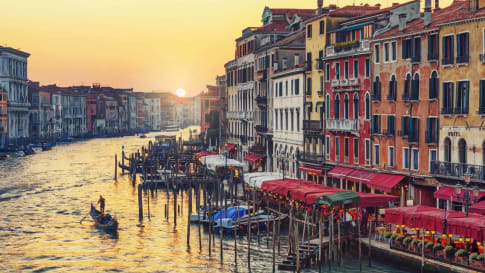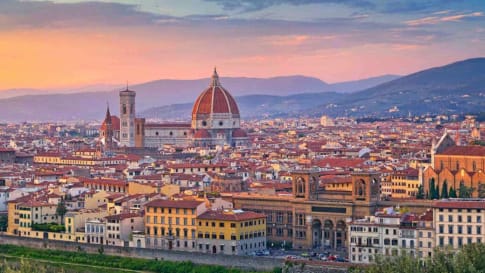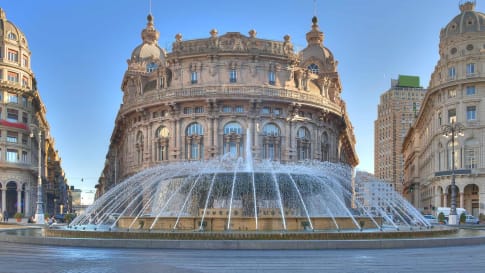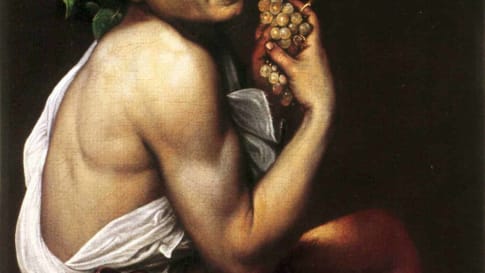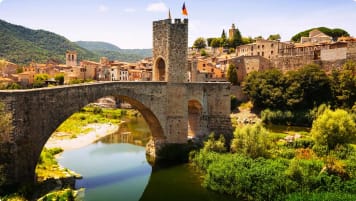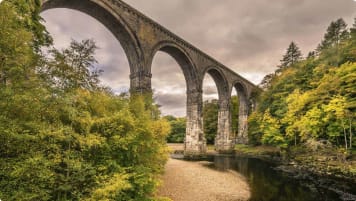Heritage, culture, history of Italy, seniors small group - Short Tour
Odyssey's small group tour features the best of the Italian countryside as well as the great cities and icons of Italy. We will see the Renaissance cities of Florence, Pisa, and Lucca as well as the Umbrian medieval cities of Perugia.
From A$8,595AUD
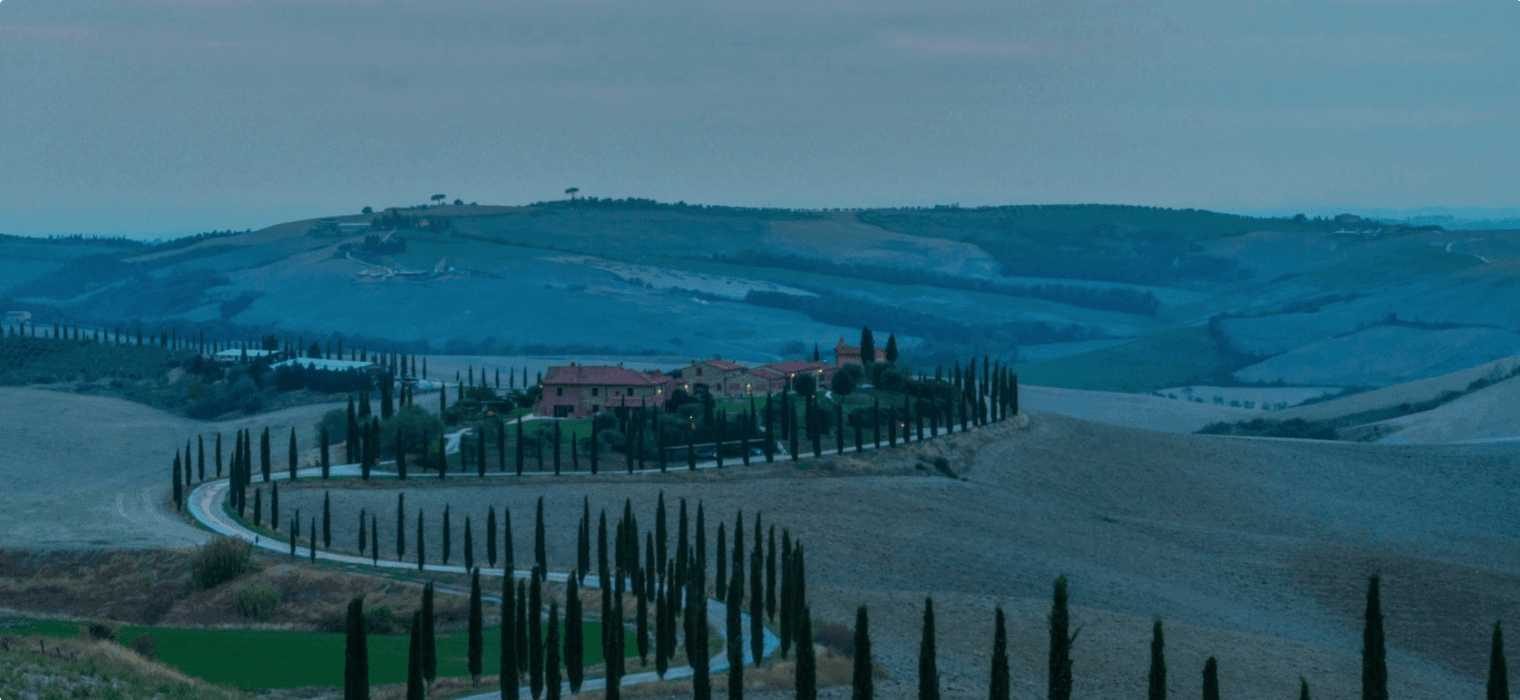
Highlights
- 1. Learn about the Franciscan religious order while visiting the Basilica of San Francesco in Assisi, Umbria.
- 2. Explore Campania, see the earliest Greek settlement of Cuma, and marvel at the Roman ruins of Pompeii.
- 3. Experience a stay in ancient religious houses.
- 4. Discover the eternal city of Rome and the beautiful city of Assisi.
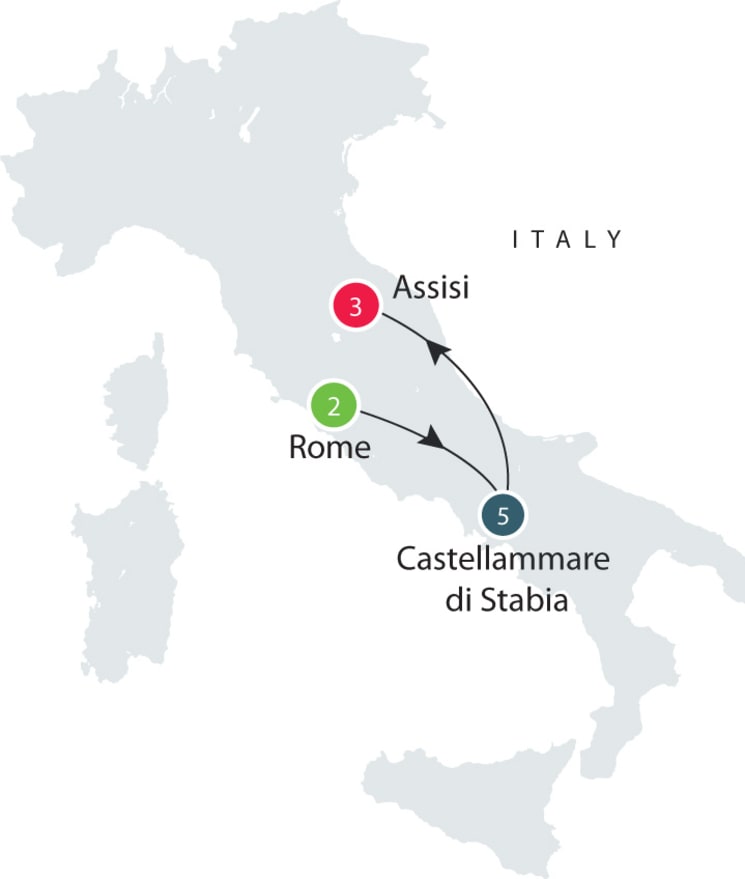
Departure Dates
| Departure Date | Price |
|---|---|
| 14 September 2025 Ends 24 September 2025 • 11 days A$8,595 Twin A$10,335 Single Available | Selected |
Small group tours Italy: heritage, culture, history of Italy
Odyssey offers easy, convenient, and relaxed escorted small group tours across Western Europe and beyond. We explore Italy’s fairy-tale natural beauty, its ancient Roman, and Imperial heritage, its World Heritage Sites, and world famous cities, all with some truly spectacular scenery along the way. This and more is all waiting to be explored on one of Odyssey’s small group tours of Italy, designed for the senior traveller, and led by experienced, and enthusiastic like minded people.
This small group tour exploring the heritage, culture, and history of Italy is a popular 11-day program. Beginning in Rome, this trip to Italy, especially designed for mature-aged and senior travellers, is a fully escorted tour with a Program Leader and local guides. Our guides are all passionate about the places where they are leading the group, and are delighted to share their enthusiasm with you on this short tour. This is a short version of our 22-day tour to Italy.
Small group tours Italy Itinerary
This seniors small group short tour takes us from the eternal city of Rome south to Castelammare di Stabbia on the Bay of Naples. We also experience the breathtaking scenery of the UNESCO World Heritage Site, Amalfi Coast, with its whitewashed villages tumble into azure blue seas. Other UNESCO World Heritage sites will also be visited on this tour. We spend 5 nights in Castelammare di Stabbia before heading north again for 3 nights in Assisi, where your tour ends.
Our fully escorted tour of Italy features guided walks through the best of the Italian countryside and we visit the Umbrian medieval cities of Perugia, Gubbio, and St Francis' Assisi, the spectacularly cosmopolitan city of Naples, and we also take in the Roman remains of Pompeii and the island retreat of Capri.
This tour of Heritage Italy short small group tour is perfect for the mature traveller single traveller or couple seeking to learn about Italy and experience its spectacular scenery.
Articles and Other tours with Odyssey Traveller
This tour of Heritage Italy is perfect for the mature-aged or senior single traveller or couple seeking to learn about Italy while enjoying its many splendours.
For more details, click the ‘Top 5’ or ‘Itinerary’ buttons above! If you’re keen to experience this tour, please call or send an email. Or, to book, simply fill in the form on the right hand side of this page.
We have a collection of guided tours for mature-aged and senior travellers seeking to see, feel and learn about this country. Click here for our other tours to Italy, and our tours to Europe.
We have a tour focused on Southern Italy and Sicily. Click here to see this tour package.
To prepare for the trip, check out our blog post listing 10 great books to read before travelling Italy! You can also see our other Italy-related articles here.
For more details about this tour from Odyssey Traveller or other small group tours of Italy offered, click the ‘Top 5’ or ‘Itinerary’ buttons above! If you’re keen to experience this tour, please call or send an email. Or, to book, simply fill in the form on the right hand side of this page.
Gallery
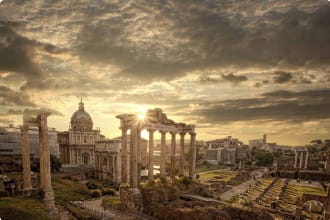
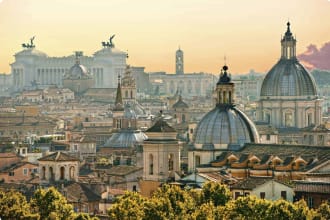
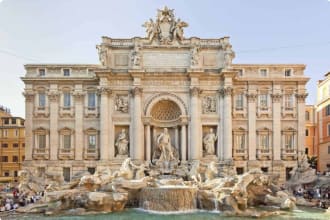
Itinerary
12 days
Day 1: Rome
Accommodation: 2 nights at Milani Hotel or similar.
Upon arrival in Rome we will come individually to the hotel. In the evening we will walk to a local restaurant for a briefing on the tour and dinner.
Founded by the Etruscans, Rome became the centre of Europe’s greatest Empire and one of the world’s great religions. It still offers an astonishing array of outstanding sights, from the Roman Forum and Colosseum, to the great Vatican Basilica of St. Peter. The city is full of rich churches, monuments, and museums. Rome is a city in which a phenomenal concentration of history, legend, and icons co-exist with the hustle and bustle of its 4 million inhabitants.
(D)
Day 2: Rome
Accommodation: Milani Hotel or similar.
Today we will enjoy a morning city tour and learn more about the culture and history of the people of Italy. The afternoon is free to explore the city on our own.
(B) (D)
Day 3: Castellamare di Stabia
Accommodation: 5 nights at Castellammare di Stabia or similar.
This morning we travel to Castellamare di Stabia near Naples, which is associated with the Etruscans and the Greeks. On the way we will pause in Montecassino to visit the Abby. After we have lunch individually, we will continue on a guided tour of the preserved Roman city of Herculaneum, before arriving at our hotel in Castellamaare di Stabia in time for dinner.
(B) (D)
Day 4: Castellamare di Stabia
Accommodation: Castellammare di Stabia or similar.
Today we will learn about Italy’s earliest Greek settlement, Cuma, where we will visit the Cave of Cumean Sybil. We will have time to explore the archaeological site. This afternoon and evening is available for you to explore at your leisure.
(B) (D)
Day 5: Castellamare di Stabia
Accommodation: Castellammare di Stabiaor similar.
This morning we will visit Pompeii with our local specialist guide and have a tour of the archaeological site. This region experienced a period of great prosperity under Roman leadership, as can be seen in the superb remains at Pompeii and Herculaneum. We discover the rich Roman heritage as we visit the excavated site of Pompeii, then we will transfer to Naples where we have lunch individually before having a guided tour of the main sights of the city. We visit the National Archaeological Museum and then enjoy some free time to explore the city on our own. We also visit the city of Naples and experience the awesomely stunning coastal scenery of the Amalfi Riviera where beautiful villages such as Positano and Amalfi cling to the dramatic rocks above the Gulf of Salerno. We return to the hotel in the evening in time for dinner.
(B) (D)
Day 6: Castellamare di Stabia
Accommodation: Castellammare di Stabiaor similar.
This morning we will travel to Paestrum and visit its archaeological site with our specialist guide. We will see the remains of superb Greek Temples. We will return to Castellamare di Stabia and enjoy the remainder of the day at leisure.
(B) (D)
Day 7: Castellamare di Stabia
Accommodation: Castellammare di Stabia or similar.
This morning we drive the Amalfi Coast, pausing at some of the beautiful villages clinging to the rocks. We will meet our local guide and board the fast ferry from Sorrento across to Capri. We will learn about the Roman era as we visit Capri, from where Tiberius ruled the Empire.
We will visit the Blue Grotto before taking the funicular to the town of Capri, where we have a walking tour. We will transfer to Anacapri for another walking tour prior to taking the fast ferry back to the mainland. Lunch today is at our own arrangements on Capri and dinner is back at our accommodation.
(B) (D)
Day 8: Assisi
Accommodation: 3 nights at Domus Pacis or similar.
Today we will leave the Bay of Naples for Assisi. En route we will visit the magnificently opulent Palazzo Reale at Caserta, a Versailles style palace built for Bourbon King Charles III, and pause at the Etruscan city of Orvieto, with its impressive cathedral. Lunch will be at our own arrangements and dinner will be at our hotel in Assisi.
Long dismissed as Tuscany’s “gentler sister,” Umbria has recently emerged from the shadow of its better-known western neighbour. Forming an expanse of gentle pastoral countryside and high mountain wilderness of oak woods and ice-clear streams, the picturesque region has been dubbed the “Green Heart of Italy.” It is a strikingly beautiful area with a profusion of fine historic hill-towns, such as Perugia, the region’s capital, Gubbio, Todi, and Spoletto. The region also boasts some fine Roman remains and some of Italy’s oldest churches. Assisi, the birthplace of St. Francis, contains the Basilica di San Francesco, frescoed in part by Giotto and Orvieto, magnificently situated on a volcanic crag.
(B) (D)
Day 9: Assisi
Accommodation: Domus Pacis or similar.
Today we will meet our local guide for a morning walking tour of Assisi including a visit to the Basilica. In the afternoon we travel to Spoleto for lunch at our own arrangements and enjoy some time to explore this former Roman colony at leisure.
(B) (D)
Day 10: Assisi
Accommodation: Domus Pacis or similar.
This morning we will visit Gubbio and have time to explore the town on our own on its vibrant market day. We then transfer through to the university town of Perugia for lunch at our own arrangements, followed by a guided tour of the main sights of the city.
(B) (D)
Day 11: Assisi
The tour will conclude after breakfast.
(B)
Includes / Excludes
What’s included in our Tour
- 10 nights accommodation.
- 10 breakfasts and 5 dinners.
- Transport and field trips as indicated.
- Applicable entry fees and services of local English speaking guides.
- Service charges and gratuities.
- Services of an Odyssey Tour Leader.
- Detailed tour information booklet.
What’s not included in our Tour
- International or domestic flights.
- Comprehensive International Travel Insurance.
- Items of a personal nature such as telephone calls and laundry.
Participants must be able to carry their own luggage, climb and descend stairs, be in good health, mobile and able to participate in 3-5 hours of physical activity per day, the equivalent of walking / hiking up to 8 kilometers per day on uneven ground.
Book now
Make it a private tour
Easing your journey
Crossing international borders with restrictions
The list of requirements to travel internationally has changed and will continue to change for several years. Odyssey is here to assist you in managing your way through these requirements:
For more information see our Crossing international borders with restrictions page.
Book With Confidence
If less than 30 days before your tour starts you are unable to travel as a result of Government travel restrictions, Odyssey Traveller will assist you with a date change, provide you with a credit or process a refund for your booking less any non-recoverable costs.
See Terms and conditions for details.
Peace of Mind Travel
The safety of our travellers, tour leader, local guide and support staff has always been our top priority and with the new guidelines for public health and safety for keeping safe for destinations around the world, we’ve developed our plan to give you peace of mind when travelling with us.
See Peace of Mind Travel for details.
Reviews
It was a marvellous tour. I was privileged, as we all were, to see so many things of beauty, and so much history, in your very capable hands. Thank you for passing on some of your knowledge, and for your ready assistance. Thank you also for the photos and the list of guides; I'd been trying to remember the name of that rather good, but unusual fellow we met in Siena. No doubt because of his enthusiasm - and eccentricity - I remember Siena so well. (BH - Heritage Italy)
Participant Sep -15
Thank you so much for being a wonderful leader for the Heritage Italy tour. It was so interesting and has left me with lots of things to think about and follow up in my reading. I found I had an old book giving the history of Greek science, i.e. the thinking of the Greeks in the early BC time. An interesting addition to our visit to Paestum and Cumae. The whole experience was marvellous and I have to thank you again for your kindness and consideration and the generous amount of time you gave to us all. I really appreciated that. (MB - Heritage Italy)
Participant Sep -15
Apart from just touching base and saying hi, I wanted to thank you for such a wonderful trip. Fourth time in Italy for me but the chance to get a little off the beaten track was really special... not to mention I got so much more insight into Italy than I had before. (KG Heritage Italy)
Participant Sep -15
Reading List Download PDF
The Italians
John Hooper
Sublime and maddening, fascinating yet baffling, Italy is a country of endless paradox and seemingly unanswerable riddles.
John Hooper's marvellously entertaining and perceptive new book is the ideal companion for anyone seeking to understand contemporary Italy and the unique character of the Italians. Looking at the facts that lie behind - and often belie - the stereotypes, his revealing book sheds new light on many aspects of Italian life: football and Freemasonry, sex, symbolism and the reason why Italian has twelve words for a coat hanger, yet none for a hangover.
The Borgias
Christopher Hibbert
The name Borgia is synonymous with the corruption, nepotism, and greed that were rife in Renaissance Italy.
The powerful, voracious Rodrigo Borgia, better known to history as Pope Alexander VI, was the central figure of the dynasty. Two of his seven papal offspring also rose to power and fame - Lucrezia Borgia, his daughter, whose husband was famously murdered by her brother, and that brother, Cesare, who served as the model for Niccolo Machiavelli's The Prince. Notorious for seizing power, wealth, land, and titles through bribery, marriage, and murder, the dynasty's dramatic rise from its Spanish roots to its occupation of the highest position in Renaissance society forms a gripping tale.
Erudite, witty, and always insightful, Hibbert removes the layers of myth around the Borgia family and creates a portrait alive with his superb sense of character and place.
SPQR: A History of Ancient Rome
Mary Beard
Ancient Rome matters.
Its history of empire, conquest, cruelty and excess is something against which we still judge ourselves. Its myths and stories - from Romulus and Remus to the Rape of Lucretia - still strike a chord with us. And its debates about citizenship, security and the rights of the individual still influence our own debates on civil liberty today.
SPQR is a new look at Roman history from one of the world's foremost classicists. It explores not only how Rome grew from an insignificant village in central Italy to a power that controlled territory from Spain to Syria, but also how the Romans thought about themselves and their achievements, and why they are still important to us. Covering 1,000 years of history, and casting fresh light on the basics of Roman culture from slavery to running water, as well as exploring democracy, migration, religious controversy, social mobility and exploitation in the larger context of the empire, this is a definitive history of ancient Rome.
SPQR is the Romans' own abbreviation for their state: Senatus Populusque Romanus, 'the Senate and People of Rome'.
The Roman Forum
David Watkin
There are few more historic and evocative places in the world. Caesar was cremated there. Charles V and Mussolini rode by it in triumph. There Napoleon celebrated his festival of liberty. In this radical reappraisal David Watkin teaches us to see the Forum with new eyes and helps us to rediscover its rich history. This is as stimulating to the armchair traveller as it is useful as a guide to the Forum itself.
'With verve, authority and no little humour, Watkin tells the detailed and complex story of this great but mutilated landmark ... it is an almost impossible task, superbly done' Peter Jones, BBC History Magazine
'In this sprightly volume ... the distinguished architectural historian David Watkin charts the shifting fortunes of the site ... he has an engagingly romantic feeling for the place... deploying a good deal of sharp wit, he reveals how the relatively recent obsession with recovering the Forum's classical past has led to much unhappy destruction and much less scarcely happy invention' Matthew Sturgis, Country Life
The Rise and Fall of the House of Medici
Christopher Hibbert
At its height Renaissance Florence was a centre of enormous wealth, power and influence. A republican city-state funded by trade and banking, its often bloody political scene was dominated by rich mercantile families, the most famous of which were the Medici. This enthralling book charts the family’s huge influence on the political, economic and cultural history of Florence. Beginning in the early 1430s with the rise of the dynasty under the near-legendary Cosimo de Medici, it moves through their golden era as patrons of some of the most remarkable artists and architects of the Renaissance, to the era of the Medici Popes and Grand Dukes, Florence’s slide into decay and bankruptcy, and the end, in 1737, of the Medici line.
The Black Prince of Florence: The Spectacular Life and Treacherous World of Alessandro de' Medici
Catherine Fletcher
'Nothing in sixteenth-century history is more astonishing than the career of Alessandro de' Medici' Hilary Mantel
In The Black Prince of Florence, a dramatic tale of assassination, spies and betrayal, the first retelling of Alessandro's life in two-hundred years opens a window onto the opulent, cut-throat world of Renaissance Italy.
‘Astonishing … gripping and original … a compelling portrait’ Financial Times
‘Packed with intrigue … Fletcher describes with cool menace the plotting and politicking that dominated Alessandro’s rule … brought splendidly to life in this excellent book’ Sunday Times
‘Engrossing … bursts with stabbings, poisonings, duels, eye-gougings, arquebus shootouts and people being run through with swords. Fletcher’s approach is scholarly yet dramatic, immersed in Renaissance glamour … a tremendous step forward in our knowledge of this intriguing man’ Spectator
‘Scintillating. This is everything a historical biography should be’ Ian Mortimer, author of The Time Traveller's Guide to Medieval England
The year is 1531. After years of brutal war and political intrigue, the bastard son of a Medici Duke and a ‘half-negro’ maidservant rides into Florence. Within a year, he rules the city as its Prince. Backed by the Pope and his future father-in-law the Holy Roman Emperor, the nineteen-year-old Alessandro faces down bloody family rivalry and the scheming hostility of Italy’s oligarchs to reassert the Medicis’ faltering grip on the turbulent city-state. Six years later, as he awaits an adulterous liaison, he will be murdered by his cousin in another man’s bed.
From dazzling palaces and Tuscan villas to the treacherous backstreets of Florence and the corridors of papal power, the story of Alessandro’s spectacular rise, magnificent reign and violent demise takes us deep beneath the surface of power in Renaissance Italy – a glamorous but deadly realm of spies, betrayal and vendetta, illicit sex and fabulous displays of wealth, where the colour of one’s skin meant little but the strength of one’s allegiances meant everything.
‘Bold, breathless and full of suspense’ The Times
‘Original, revelatory and gripping’ Jessie Childs, author of God's Traitors
‘Gripping … Fletcher describes in detail without losing momentum’ Economist
‘Fascinating and profound’ Paul Strathern, author of The Medici
‘Accomplished and original. A newly sympathetic portrait of a monarch whose rule in Florence was even more unlikely than Henry VII’s presence on the English throne’ Diarmaid MacCulloch, author of A History of Christianity
‘Brilliantly written and impeccably researched. A stunning book’ Tracy Borman, author of Thomas Cromwell
The Land Where Lemons Grow: The Story of Italy and its Citrus Fruit
Helena Attlee
Travellers have always been thrilled by the sight of citrus in Italy, where dark leaves and bright fruit seem to charge the landscape, making the trees symbols of a sun-soaked, poetic vision of the country. Citrus also holds a special place in the Italian imagination, and in The Land Where Lemons Grow, Helena Attlee sets out to explore its curious past and its enduring resonance in Italian culture. The Land Where Lemons Grow is a heady mixture of travel writing, history, horticulture and art; a unique journey through Italy's cultural, culinary and political past. Helena Attlee is the author of four books about Italian gardens, and others on the cultural history of gardens around the world. Helena is a Fellow of the Royal Literary Fund and has worked in Italy for nearly 30 years.
The Civilization of the Renaissance in Italy
Jacob Buckhards and Peter Murray
For nineteenth-century Swiss historian Jacob Burckhardt, the Italian Renaissance was nothing less than the beginning of the modern world - a world in which flourishing individualism and the competition for fame radically transformed science, the arts, and politics. In this landmark work he depicts the Italian city-states of Florence, Venice and Rome as providing the seeds of a new form of society, and traces the rise of the creative individual, from Dante to Michelangelo. A fascinating description of an era of cultural transition, this nineteenth-century masterpiece was to become the most influential interpretation of the Italian Renaissance, and anticipated ideas such as Nietzsche's concept of the 'Ubermensch' in its portrayal of an age of genius.
Art in Renaissance Italy
John T. Paoletti and Gary M. Radke
With a freshness and breadth of approach that sets the art in its context, this book explores why works were created and who commissioned the palaces, cathedrals, paintings, and sculptures. It covers Rome and Florence, Venice and the Veneto, Assisi, Siena, Milan, Pavia, Genoa, Padua, Mantua, Verona, Ferrara, Urbino, and Naples. Chapters are grouped into four chronological parts, allowing for a sustained examination of individual cities in different periods. "Contemporary Scene" boxes provide fascinating glimpses of daily life and "Contemporary Voice" boxes quote from painters and writers of the time. Innovative and scholarly, yet accessible and beautifully presented, this book is a definitive work on the Italian Renaissance. This revised edition contains around 200 new pictures and nearly all colour images.
